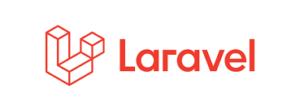
Laravel Training Jodhpur
Techfly, Jodhpur providing popular and most important MVC Frameworks , Laravel Using Laravel Training you can create web application with speed and easily.Every framework having own specialty and they can help in high performance & larger scale web applications development. Before the training let we introduce in of Framework.
“Framework” is a structure that developers can choose to build their web applications as per their demands & standard. It determines the structure of application and facilitates it and connects with many different API’s. Laravel developers to develop faster, efficiently and accessible PHP Web Applications .These frameworks are user friendly & that can also help in reducing PHP Coding. You want a framework with a small footprint. You need exceptional performance. You need broad compatibility with standard hosting accounts that run a variety of PHP versions and configurations. You want a framework that requires nearly zero configurations.
There are so many open source platforms available that enable a developer to develop a website & E commerce Application for free. Laravel is one of the most important platforms that allow you a free website and application development. It has become very popular among PHP web developers due to its various features. It is used to create robust web applications in PHP field. Those applications which develop on Laravel framework work fast and effectively due to its dynamic features.
Who can take this Laravel Training
- Front- End Knowledge HTML5, CSS3 , Bootstrap 4
- Knowledge of Core PHP, PHP With Programming experience in an Object Oriented language
- Database knowledge & MySQL Queries
- Dynamic Implementation :- Java Script , JSon , Ajax
Laravel Training Duration
- 45 days of Theory and Practical Classes
- 2 Hrs Daily Class Theory and Practical Classes
- 2 Days Free Demo Class
Laravel Training Course Content
- Introduction to Laravel
1.1 Getting started with Laravel
1.2. Laravel MVC & Routing
- Setup & Installation
2.1. Installing Composer and command line tool
2.2. Blade essentials & Resource controllers
2.4. Laravel Route groups and Filters
2.5. Explanation of Models, Views and Controllers
- Introduce with Database MySQL
3.1. Working with database
3.2. Query builder, Migrations and Database seeding
- Forms and validations
4.1. Setting up Laravel form Using HTML, Css and Bootstrap
4.2. Validating a form Using JavaScript or AngularJs
4.3. Creating Admin Post Resource
4.4. Creating a front end Using HTML, Css and Bootstrap
4.5. Setting up the blog
4.6. Securing the admin panel
4.7.Handling Routing
4.8. Establishing an HTML view
- Tables and Templates
5.1. Creating tables with schema Builder
5.2. Enabling version control with migrations
5.3. Querying with eloquent ORM
5.4. Displaying Laravel code
5.5. Working with Blade templates
- Conditions and Validations
6.1. Defining conditions
6.2. Integrating form elements
6.3. Setting up authentication
6.4. Creating a registration form
6.5. Securing content
- Testing of Developed Application using Laravel
7.1. Testing Laravel code
7.2. Setting up PHP Unit and Running a initial test
7.4. Handling framework assertions
- Build and Deploying Application
8.1. Building a Laravel application
8.2. Authenticating users in Laravel application
8.3. Deploying Laravel code in application
